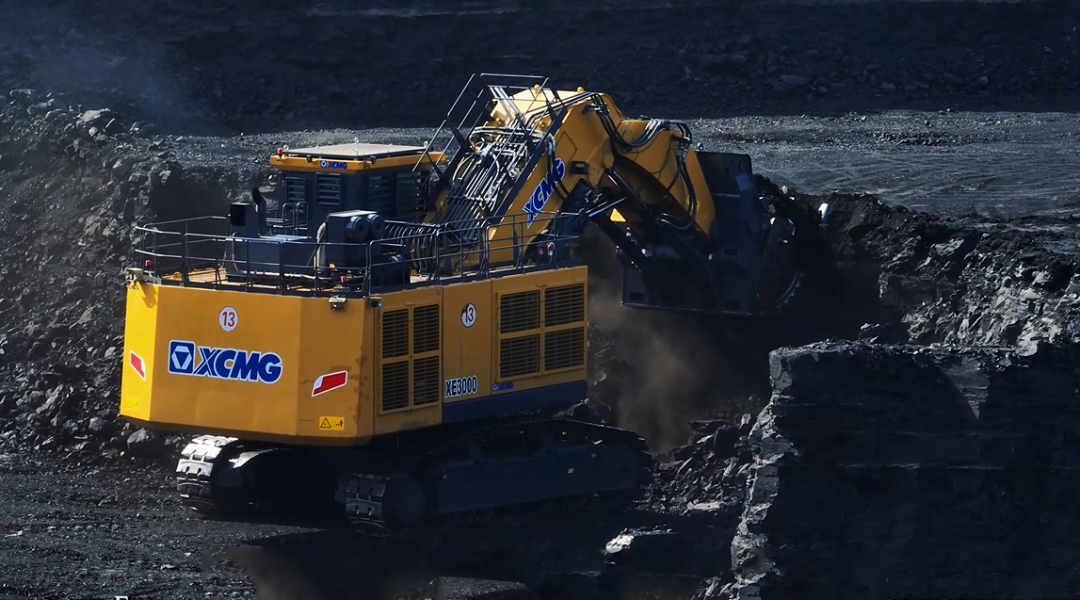Monday to Friday 9:00 - 17:00 (Beijing Time)

In the mining industry, where “cost per ton” is the ultimate king, selecting the right set of machinery is akin to laying the cornerstone for a company’s future. Both industry veterans and new investors inevitably face a core question: Should they choose a Chinese brand or a Western brand?
As a long-time industry observer, let’s discuss this topic today. Setting biases aside, we’ll conduct an in-depth comparison based on what customers care about most: quality, value for money, and service.
I. The Two Contenders: Both Formidable, Each with Unique Strengths
Western Giants (e.g., Caterpillar, Komatsu, Sandvik): They are the founders and rule-makers of the industry. They represent cutting-edge technology, extreme reliability, and profound brand heritage. You’ll find them in any world-class, large-scale mine.
Chinese Power (e.g., XCMG, SANY, Liugong, CITIC Heavy Industries): They are the rapid followers and disruptors. Leveraging unparalleled cost advantages, flexible market strategies, and rapidly improving technology, they are capturing an increasingly significant share of the global market.
II. Core Dimensions: The Three Key Customer Concerns
- Quality & Reliability: Marathon Runner or Sprinter? Western Brands: The Kings of Endurance
Strengths: Key components (e.g., engines, hydraulic systems) often come from in-house or top-tier suppliers, validated over decades of iteration. Machines are designed for a long service life, offering exceptionally high availability and stability under extreme and harsh conditions. For large mines where continuous production is critical and downtime costs are massive, this reliability is a lifeline.
Weakness: In the pursuit of ultimate reliability, designs can sometimes be conservative, with longer adoption cycles for new technologies. Chinese Brands: The Rapidly Improving Sprinters
Strengths: Progress over the last decade is undeniable. Through technology introduction, absorption, and re-innovation, mainstream Chinese brands now produce quality that fully meets the routine operational demands of medium and large mines. They are more daring in applying new technologies and have faster iteration speeds.
Weakness: There can still be a gap in the durability of core components and overall engineering precision compared to the top tier. Under极限 (extreme) conditions, failure rates might be relatively higher. Achieving consistent “product uniformity” and “long service life” remains an ongoing challenge. - Value & Initial Investment: Upfront Cost or Total Cost of Ownership? Chinese Brands: Unquestionable Initial Cost Advantage
This is their sharpest weapon. For equipment of similar tonnage or specification, the purchase price of Chinese brands is typically 20% – 40%, or even more, lower than Western brands. This is a decisive attraction for small and medium-sized mines with tight budgets or startups facing financing difficulties. Western Brands: Advocates of Total Cost of Ownership (TCO)
They emphasize not just the purchase price, but the total cost over the machine’s entire lifecycle. While expensive to buy, their higher reliability, lower failure rates, higher resale value, and better fuel efficiency can mean a lower total cost over a 5-10 year period. - Technical Service & Support: Quick Fix or Long-Term Partnership? Western Brands: Systematic Global Support
They possess mature, standardized global after-sales service networks. Their technical engineers are highly proficient and can provide systematic solutions. However, in some remote areas, parts inventory might be insufficient, response times can be hampered by distance, and service and part costs are notoriously high. Chinese Brands: Agile, Localized Service
They offer extremely fast response times and a proactive service attitude. Having an “engineer nearby” is a significant advantage. Parts are readily available and inexpensive, greatly reducing equipment downtime. However, experience in handling complex, systemic issues may still be developing. III. How to Choose? A Practical Decision Guide
There’s no “best,” only “most suitable.” Your choice should be based on your specific situation. Start by asking these questions:
- Consider Your Budget & Financing Capability:
If your cash flow is tight, or your project requires strict control of capital expenditure upfront: Chinese brands are a more pragmatic choice, allowing you to quickly build production capacity with limited funds. - Evaluate Mine Scale & Operational Intensity:
If you are an SMB mine, or your working conditions are relatively standard: Chinese equipment can fully meet your needs, maximizing the value advantage.
If you are a large or mega-mine requiring 7×24 continuous, high-intensity operation where every minute of downtime is costly: Then the super reliability and availability of Western brands justify their premium. Here, Total Cost of Ownership (TCO) should be your core consideration. - Assess Your Technical Team & Maintenance Capability:
If your maintenance team is strong and capable of major overhauls and troubleshooting: You can opt for Chinese brands, using your in-house skills to mitigate potential product shortcomings while benefiting from low-cost parts.
If your maintenance capability is weak and you rely heavily on manufacturer support: Then the standardized, systematic service of Western brands offers more peace of mind, though you must be prepared to pay the premium. - Consider a “Mixed Fleet” Strategy:
This is a very smart approach. Use Western brands for critical core processes (e.g., main hoists, large electric shovels, core crushers) to guarantee absolute operational stability. Use Chinese brands extensively for auxiliary or non-critical roles (e.g., site transport, grading, water spraying) to optimize overall investment returns. Conclusion
This “East vs. West” competition is not a zero-sum game; it drives the entire industry forward. Western giants push Chinese brands to move upmarket, while Chinese competition forces Western giants to reconsider costs and improve service.
As customers, we are the biggest beneficiaries of this rivalry. The final decision should not stem from blind loyalty or prejudice towards any brand, but from a meticulous economic calculation based on your own reality.
Remember, the best choice is the one that fits you best.
